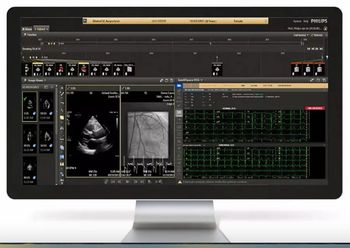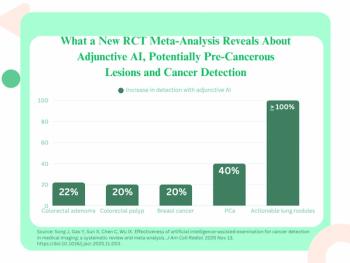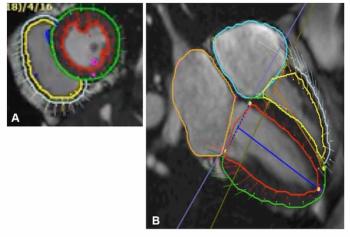
Agfa hopes to become medical IT giant through European acquisitions
Gone are the days when Agfa supplied just radiology products. The company has much greater aspirations now.With the acquisition of two European companies -- Symphonie on Line in October and GWI scheduled for early next year -- Agfa expects to become a vendor of broad-based medical IT products.
Gone are the days when Agfa supplied just radiology products. The company has greater aspirations now.
With the acquisition of two European companies - Symphonie on Line in October and GWI scheduled for early next year - Agfa expects to become a vendor of broad-based medical IT products.
The company was already presenting itself as such at the RSNA meeting, showcasing IT solutions for the U.S. that extend beyond radiology, while extolling what might be achieved in Europe on the heels of its corporate expansion.
Products shown at the meeting address cardiology, orthopedics, and women's healthcare. Surgical planning for orthopedic surgeons and workstations specific to cardiology are buoyed by expansions into computer diagnostics and mammography workstations.
"After 100 years in the radiology space, we are expanding horizontally with our enterprise suites into the other 'ologies' and looking for vertical expansion into the electronic medical record," said Ray Russell, Agfa executive director of marketing.
Its corporate ventures offer unprecedented opportunities for growth in Europe. Symphonie on Line's HIS and electronic patient record IT products have attracted an installed base of more than 1200 sites in France - about half of all French hospitals.
"This immediately gives us a number-one share in a fairly large European market," Russell said.
Privately held GWI specializes in administrative and clinical IT solutions. Its Orbis products integrate general administration, workflow, and documentation systems employed at more than 2000 medical sites in Germany, Austria, Switzerland, and France.
Agfa's corporate expansion is being financed with cash. Symphonie on Line cost the company €42 million ($55.8 million). GWI will cost much more: €256.5 million ($340 million) and another €95 million ($126 million) due if certain commercial milestones are met.
The acquisitions will be worth the price, according to Lenny Reznik, senior marketing manager for Agfa radiology.
"We can get our feet wet in the IT space in the fragmented European market and as we try to consolidate there, we can see whether that technology is portable to the U.S.," he said. "If not, we will see what we have to do here in terms of joint ventures, partnerships, or acquisitions."
Orthopedics is a logical place for expansion in the U.S. market, and Agfa has already begun there. Presurgical planning is serving as a beachhead from which the company has begun delivering digital templates for use in the increasingly filmless DR and CR environment. At the RSNA meeting the company exhibited a work-in-progress Orthopedics Spine Module that goes a step further, helping to plan spinal surgeries and calculate certain patient-specific parameters such as scoliosis and vertebral rotation.
These digital modules, designed to fit into the company's Impax PACS, have been successful in the hospital market. And Agfa plans to go much farther.
"There is tremendous interest in the private-practice orthopedic marketplace - tremendous opportunity for making private-practice offices much more efficient with Agfa CR and Agfa Impax Orthopedics (a tailored form of Impax PACS)," Russell said.
In cardiology, the company has developed a customized workstation. Removing tools the cardiologist does not need has resulted in a simpler interface, he said.
In women's health, the company has come up with a new mammography diagnostic workstation, Impax MA3000, which retrieves, displays, archives, and distributes digital mammograms while also handling images from other digital modalities.
The company has a partnership with R2 Technology for CAD and is expanding its interfaces to handle software from other vendors. Just prior to the meeting, U.K.-based Medicsight agreed to allow Agfa to integrate and distribute its software, which detects and measures colon polyps, lung lesions, and coronary artery calcifications.
The cornerstone of these efforts is Agfa's Impax RIS/PACS. At the RSNA meeting, the company demonstrated the newly enhanced Impax Web1000 5.0 ES, which integrates RIS, PACS, and speech recognition. The system features a Data Currency that speeds log-in and data display by synchronizing information from the Impax Server to the Web1000 interface. Its speech recognition module is built on a workflow model that allows "correctionists" - the modern equivalent of transcriptionists - to go through the voice recognition output and correct errors.
"This system takes us beyond radiology into orthopedics, cardiology, and women's healthcare," Russell said.
The core technology also promises to take the company into the potentially lucrative entrepreneurial segment. Agfa has developed a version tailored for the imaging center marketplace. Like its big brother, this offering combines all the capabilities needed to run a radiology practice: RIS, PACS, speech recognition, document management, billing, and practice analysis workflow.
Newsletter
Stay at the forefront of radiology with the Diagnostic Imaging newsletter, delivering the latest news, clinical insights, and imaging advancements for today’s radiologists.


























